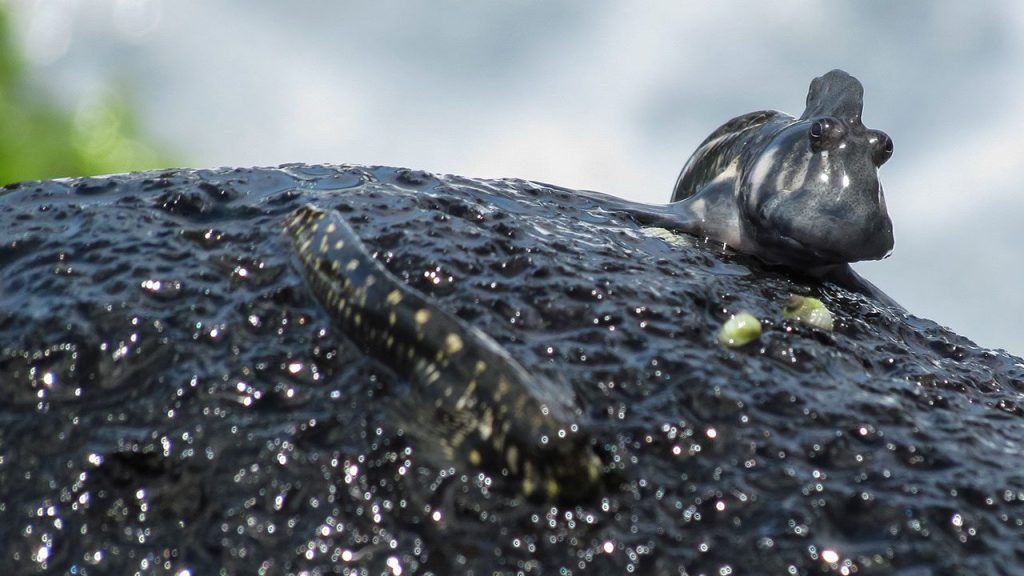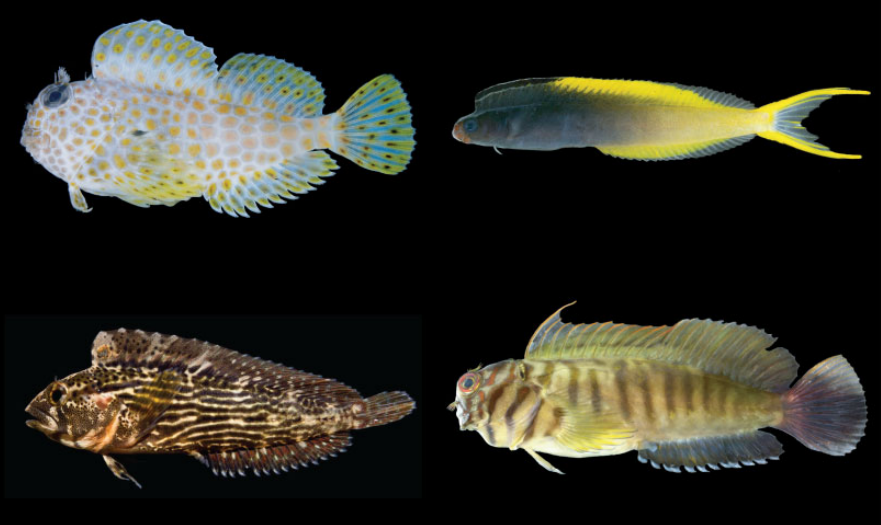By Noah Bressman
Extreme environments are often a breeding ground for animals with extreme adaptations. Arctic marine mammals have extraordinary amounts of blubber to keep them warm and sated in their icy landscapes, like the delightfully rotund walrus. The endless expanse of the open ocean has led albatrosses to evolve incredibly long wings to help them soar hundreds to thousands of miles at time before reaching land. The dense, dark underground environment has shaped a group of worm-like, wedge-headed, legless amphibians called caecilians to rein over Subterranea.
One of the most extreme environments on the planet is the intertidal zone, which is covered by water during part of the day and air the rest of the day. In this environment, many organisms have adapted to the rapidly fluctuating temperatures, oxygen levels, salinity, and exposure, from barnacles that are cemented to rocks to fish that can move overland between tide pools. These pools also contain many different species of combtooth blennies, a highly diverse group of mostly small, cryptic fishes. Do intertidal blennies also have extreme adaptations to survive in tide pools compared to their subtidal brethren?

A group of scientists led by Joshua Egan of Western Michigan University sought to answer this question in their recent IOB publication by comparing dozens of combtooth blenny species. Egan and colleagues used previously published observations on habitat to categorize blennies as either intertidal, subtidal, freshwater, or in the splash zone of shores and then mapped these habitat preferences onto a phylogeny, which is essentially a combtooth blenny family tree. Using this data, Egan and colleagues found that intertidal lifestyles evolved multiple times in blennies. They were also able to infer that combtooth blennies were lured to the beaches from deeper water at least four times while at least seven intertidal lineages transitioned to deeper water.
Egan and colleagues also took photos of blennies from museum collections and to compare body shape. To do so, they marked 16 points along their bodies that help describe the shapes of the fish. Next, they compared body shape between species to create a morphospace, which can be thought of as a map that shows how wide of a shape range these blennies occupy, and separated the results by habitat type.

To much surprise, Egan and colleagues did not see much of a difference between the body shapes of intertidal and subtidal sculpins. In fact, all the intertidal blenny shapes were encompassed within the much larger subtidal shape range. However, while it does not seem like intertidal blennies have any special body shapes that help them survive between the tides, it may mean that only a limited range of combtooth blenny body shapes are well-suited for intertidal life. Meanwhile, subtidal blennies live in a wider variety of habitats, from seagrass flats to coral reefs to oyster beds, where they can adapt to different prey sources and fill a wider variety of niches than intertidal species. Without being limited to and constrained in tide pools, subtidal blennies were able to branch out and develop a wide range of body shapes that help them squeeze into long, narrow invertebrate burrows, feed on coral polyps, and mimic cleaner fish to steal chunks from the bodies from dissatisfied clients.
References
Egan, J. P., Buser, T. J., Burns, M. D., Simons, A. M., & Hundt, P. J. (2021). Patterns of body shape diversity and evolution in intertidal and subtidal lineages of combtooth blennies (Blenniidae). Integrative Organismal Biology, obab004, https://doi.org/10.1093/iob/obab004.
Dr. Noah Bressman is currently a postdoctoral research fellow at Chapman University, studying fish biology, biomechanics, biomaterials, and behavior, but will be starting his own lab this summer as an Assistant Professor of Physiology at Salisbury University. You can find more at NoahBressman.wixsite.com/Noah or @NoahwithFish, or contact him at NoahBressman@gmail.com.